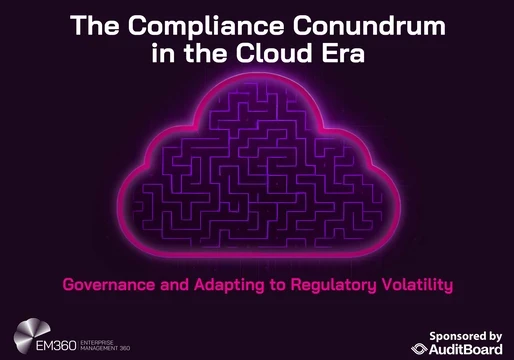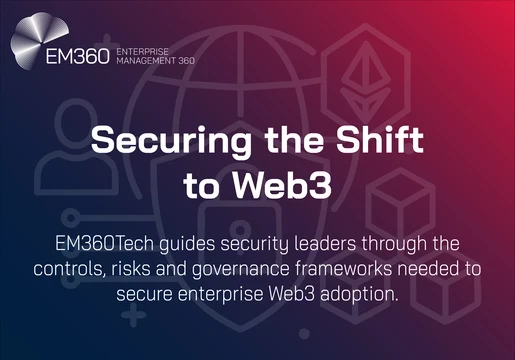Many organizations' cybersecurity training programs are failing without L&D professionals realizing it. While most focus on immediate compliance requirements and annual security awareness updates, the cybersecurity landscape evolves so rapidly that short-term training approaches leave dangerous knowledge gaps.
The evidence is stark: despite improved defenses, close to 70% of organizations still experienced a cyber-attack in the past year, with only 10% recovering more than 90% of their data. Yet most L&D departments still operate on annual cycles, creating a critical mismatch between training timelines and threat evolution.
Let's examine why the traditional annual training cycle is falling short and how strategic, long-term planning can transform cybersecurity training effectiveness.

The Hidden Cost of Short-Term Thinking
When cybersecurity training strategy operates on a one-year horizon, employees are perpetually behind the curve. Consider what happens in an organization when a new ransomware variant emerges, or when the company adopts cloud infrastructure, or when remote work policies shift security requirements. If training programs can only respond reactively, the workforce becomes the weakest link in the security chain.
This reactive approach creates three fundamental problems for organizations:
Skills decay outpaces updates. Cybersecurity knowledge has a shorter half-life than most technical skills. Without continuous reinforcement and evolution, even well-trained employees lose critical security awareness within 6-8 months.
Technology adoption outpaces training preparation. IT departments implement new systems, cloud services, and security tools faster than traditional training cycles can accommodate. Employees end up using systems they don't understand the security implications of.
Threat landscape evolution renders training obsolete. The social engineering tactics employees learned about last year may be irrelevant to the sophisticated attacks they'll face next quarter.
Building a 5-Year Strategic Foundation
Effective long-term cybersecurity training requires a fundamental shift in how L&D professionals approach program design. Instead of asking "What compliance requirements must we meet this year?" the strategic question becomes "What cybersecurity capabilities will the workforce need to protect the organization's future?"
Year 1: Establish Security Fundamentals and Assessment Baseline
The first year should focus on comprehensive skills assessment and foundational knowledge building. Most organizations discover that their assumed baseline knowledge doesn't exist—employees at all levels lack fundamental understanding of basic security principles.
Implement role-based competency assessments that reveal actual knowledge gaps rather than relying on completion certificates from previous training. Technical teams need different cybersecurity knowledge than HR departments, and executives require strategic security understanding that differs from operational staff requirements.
Establish continuous measurement systems that track both knowledge retention and behavioral changes. Traditional post-training quizzes don't predict real-world security behavior, so implement phishing simulations, security scenario exercises, and practical application assessments.
Year 2-3: Develop Role-Specific Security Expertise
With the baseline established, years two and three should focus on building specialized security knowledge aligned with actual job responsibilities. Marketing teams need to understand data privacy implications of customer engagement platforms. Finance departments require fraud detection and secure payment processing knowledge. Development teams need secure coding practices and vulnerability assessment capabilities.
This specialization phase requires partnership with security teams to identify emerging risks specific to each department. Create cross-functional training programs that help different departments understand how their security decisions impact other areas of the organization.
"The biggest challenge we see with cybersecurity training is the disconnect between generic awareness programs and actual job-specific security requirements," says John Berti, co-founder of Destination Certification. "Organizations that align their training with specific role-based threats see dramatically better security outcomes."
Year 4-5: Advanced Threat Response and Leadership Development
The advanced years should focus on developing internal security champions and incident response capabilities. Even organizations with dedicated security teams benefit enormously from having security-aware employees throughout the organization who can recognize, report, and initially respond to security incidents.
Develop security leadership capabilities at multiple levels. Executives need strategic understanding of cybersecurity risks and investment decisions. Middle managers need skills to make security-conscious operational decisions. Front-line employees need confidence to question suspicious requests and report potential threats.
Adapting the Roadmap to Organizational Changes
A five-year roadmap isn't a rigid plan—it's a strategic framework that adapts to organizational evolution. When companies expand into new markets, cybersecurity training must address region-specific threats and compliance requirements. When organizations adopt new technologies, training roadmaps should anticipate the security implications months before implementation.
Regular roadmap reviews should assess three key factors:
Business strategy alignment: How do planned business initiatives change your cybersecurity risk profile and training needs?
Technology roadmap integration: What security knowledge will your workforce need for planned technology implementations?
Threat landscape evolution: How are attack vectors and threat actor capabilities evolving in your industry?
Measuring Long-Term Training Effectiveness
Traditional training metrics—completion rates, satisfaction scores, and quiz results—don't capture the true effectiveness of cybersecurity education. Five-year roadmaps should include evolving measurement approaches that track actual security behavior improvements.
Implement leading indicators that predict security incidents before they occur. Track metrics like suspicious email reporting rates, security policy compliance in real-world scenarios, and employee confidence in handling security situations.
Monitor lagging indicators that demonstrate training impact on actual security outcomes. Measure incident response time improvements, reduced successful phishing attempts, and decreased security policy violations.
The Competitive Advantage of Strategic Training
Organizations with five-year cybersecurity training roadmaps gain significant competitive advantages beyond risk reduction. A well-trained workforce becomes capable of securely adopting new technologies faster than competitors. Employees develop security awareness that enables confident customer data handling and privacy compliance.
The cybersecurity skills shortage affects every industry, but organizations that invest in long-term employee security development reduce their dependence on external security contractors and build internal capabilities that support business growth rather than constraining it.
Cybersecurity training roadmaps should reflect the reality that cybersecurity is no longer an IT problem—it's a fundamental business capability that requires sustained investment and strategic development. The organizations that recognize this reality today will have the secure, capable workforce needed for tomorrow's challenges.
The question isn't whether organizations need better cybersecurity training. The question is whether current approaches will prepare the workforce for the threats and opportunities they'll face over the next five years. For most organizations, the answer requires a fundamental shift from reactive compliance to strategic capability building.







Comments ( 0 )